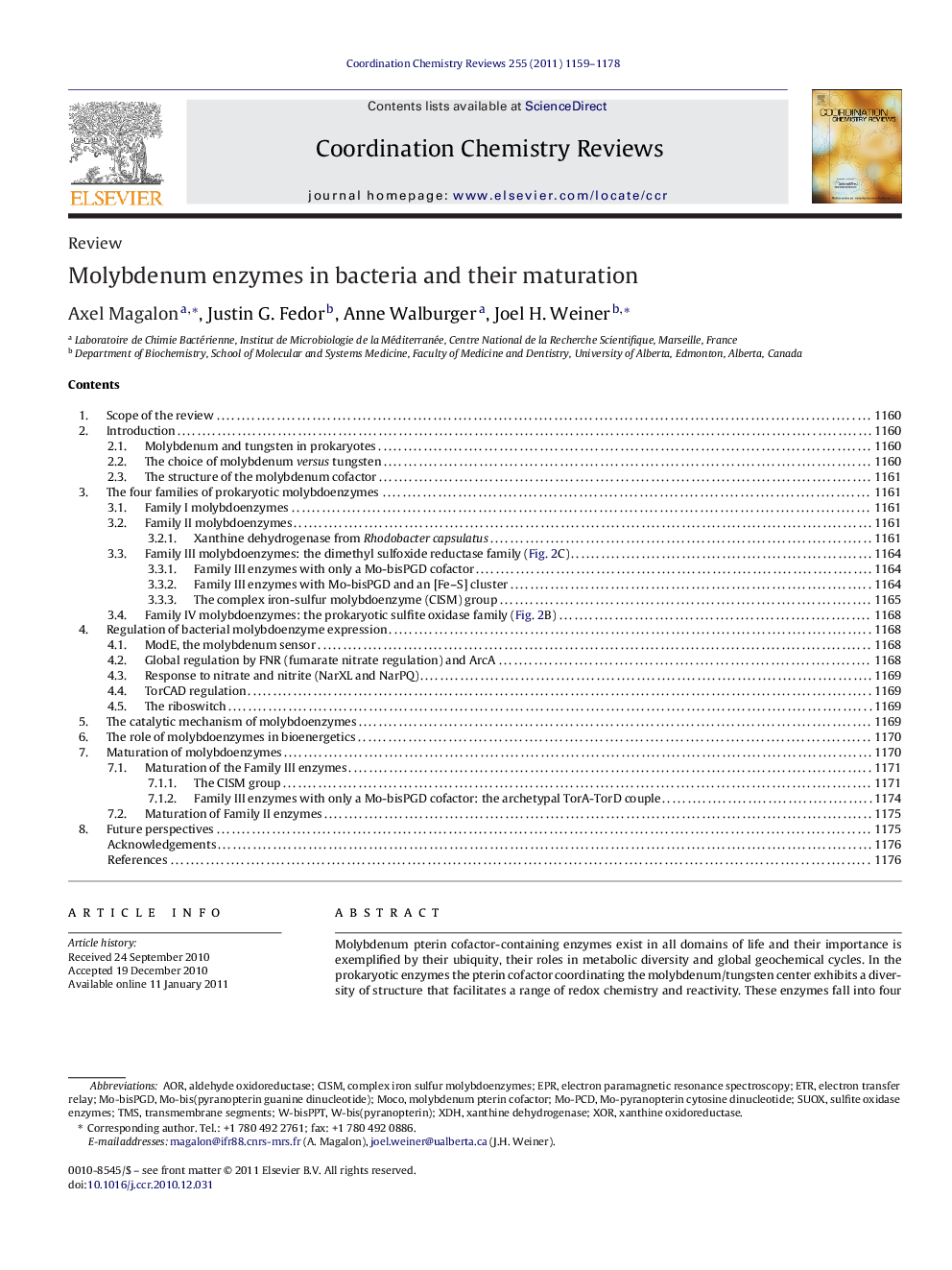| Article ID | Journal | Published Year | Pages | File Type |
|---|---|---|---|---|
| 1300171 | Coordination Chemistry Reviews | 2011 | 20 Pages |
Molybdenum pterin cofactor-containing enzymes exist in all domains of life and their importance is exemplified by their ubiquity, their roles in metabolic diversity and global geochemical cycles. In the prokaryotic enzymes the pterin cofactor coordinating the molybdenum/tungsten center exhibits a diversity of structure that facilitates a range of redox chemistry and reactivity. These enzymes fall into four families based on the cofactor sub-type. Family I is an archaeal family which binds a W-bis(pyranopterin) cofactor and a single [4Fe–4S] cluster. Family II binds either a Mo-pyranopterin or Mo-pyranopterin cytosine dinucleotide. Family II molybdoenzymes often form complexes that include subunits that bind FAD as well as [2Fe–2S] clusters. The diverse Family III enzymes (the dimethyl sulfoxide reductase family) bind a Mo-bis(pyranopterin guanine dinucleotide) cofactor, form transient or stable complexes with [Fe–S]-containing electron transfer subunits as well as soluble and membrane anchor cytochromes. Family IV enzymes bind a Mo-pyranopterin cofactor and interact with a membrane-bound cytochrome. Expression of prokaryotic molybdoenzymes is controlled by transport of Mo into the cell, cofactor biosynthesis, transcriptional regulation of apo-protein expression and riboswitch mechanisms. The biosynthesis of prokaryotic molybdoenzymes is an intricate process, requiring the synthesis of various subunits in the cytoplasm, incorporation of the metal and pterin cofactors, subunit complexation, correct subcellular targeting/transport and in many cases anchoring of the complex to the inner membrane. A series of devoted molybdoenzyme maturation proteins are crucial in various stages of enzyme maturation.
